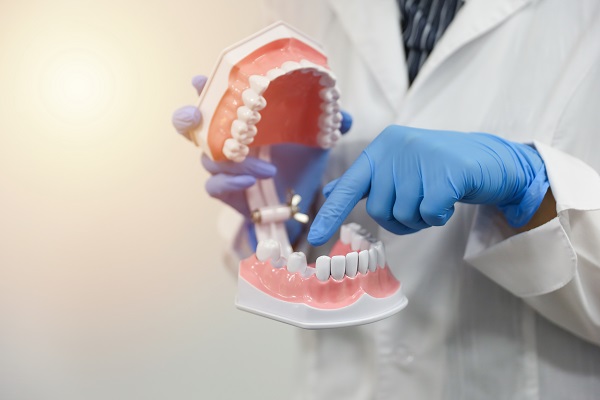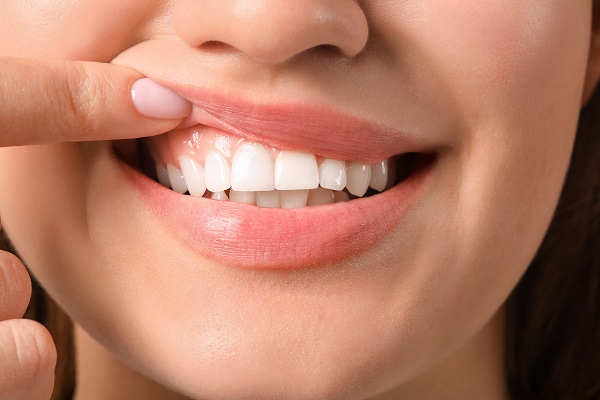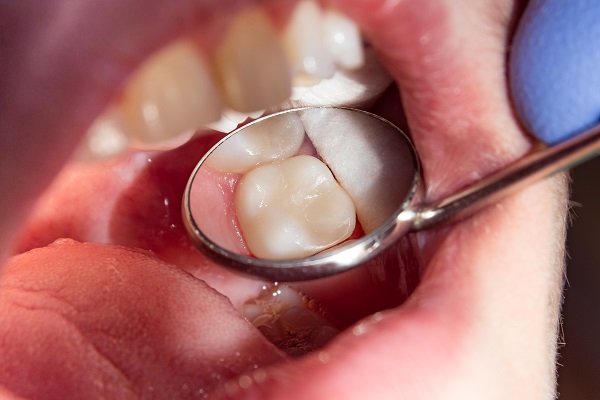Is Invisalign as Effective as Braces for Straightening Teeth?

Dr. Simranjit S. Bawa, DDS - a top Diamond+ Invisalign provider - is a proud Potomac native and US-born Sikh whose unwavering commitment to community service and dentistry sets him apart. With a Bachelor's in Biology from American University and a DDS from Howard University, Dr. Simranjit S. Bawa seamlessly integrates state-of-the-art technology with personalized care for patients of all ages. Driven by a passion for prevention and esthetics, Dr. Simranjit S. Bawa excels in everything from full mouth reconstructions to porcelain crowns, ensuring each treatment plan is tailored to enhance smiles and gum health. Off-duty, you'll find him cherishing family time, shooting hoops, hitting high notes, and indulging in culinary adventures from across the globe. Ready to experience dentistry with a personal touch? Say hello to Dr. Simranjit S. Bawa today!
Introduction
When striving for a perfectly aligned smile, patients often face a central question: should they choose clear aligners or traditional metal braces? At Potomac Crown Dentistry in North Potomac, Maryland, Dr. Bawa brings years of dental expertise to this decision. In this article, we’ll delve deeply into Dr. Bawa Invisalign vs. braces comparison in North Potomac, MD, unpack the science behind both treatment modalities, and help you decide: Braces or Invisalign? Best guidance from Dr. Bawa in North Potomac.
The Evolution of Dental Treatment
Dentals have long relied on fixed metal appliances to move teeth into their ideal positions. Traditional braces, first introduced in the early 20th century, use brackets, wires, and elastics to apply continuous force over time. Over the decades, advances such as heat-activated nickel-titanium wires and ceramic brackets have improved comfort and esthetics, but the fundamental mechanism remains the same.
In the late 1990s, clear aligner therapy emerged as an innovative alternative. Invisalign®, the first widely adopted aligner system, leverages 3D digital scanning and custom-manufactured plastic trays to incrementally reposition Teen teeth straightening with Dr. Bawa. Over successive “trays,” each applying targeted pressure, patients achieve a straightened smile without the visibility of metal wires.
How Braces and Aligners Work
Braces: Tried-and-True Mechanics
-
Components:
Metal or ceramic brackets bonded to each tooth, connected by an archwire and held with elastics. -
Force Application:
Archwires apply continuous, gentle force calibrated to the patient’s treatment plan. -
Adjustments:
At regular appointments (typically every 4–6 weeks), Dr. Bawa adjusts wires and elastics to guide tooth movement.
Invisalign: Digital Precision
-
Components:
A series of clear, removable thermoplastic trays Dr. Bawa custom aligners for teens to the patient’s dental anatomy. -
Force Application:
Each tray is engineered via a digital treatment plan to shift teeth by up to 0.25 mm per stage. -
Tray Progression:
Patients switch to a new tray every 1–2 weeks; follow-ups occur every 8–12 weeks to monitor progress.
Efficacy and Treatment Scope
Invisalign vs. Traditional Braces in North Potomac, Maryland
| Treatment Type | Ideal Cases | Complex Cases | Average Duration | Visibility |
|---|---|---|---|---|
| Braces | Mild–Severe crowding, deep bites, rotations | Excellent for all complexities | 18–30 months | High (metal/ceramic) |
| Invisalign | Mild–Moderate crowding & spacing | Selected moderate cases with attachments | 12–24 months | Minimal (clear plastic) |
- Complex Malocclusions: Braces excel at severe rotations, vertical discrepancies, and multi-planar movements.
- Moderate Realignment: Dr. Bawa teen Invisalign treatment has significantly expanded its capabilities—Invisalign vs. traditional braces in North Potomac, Maryland often shows comparable outcomes for many adult and teen patients when compliance is high.
-
Esthetic Appeal:
Aligners are virtually invisible, appealing to adults and image-conscious Invisalign for teens by Dr. Bawa. Braces, even ceramic ones, are more noticeable. -
Oral Hygiene:
Because aligners are removed for brushing and flossing, patients maintain better gum health. Braces require special brushes, floss threaders, and more diligent care to prevent plaque buildup. -
Dietary Factors:
Aligners impose no food restrictions; patients are not required to remove trays to eat. Braces necessitate avoiding sticky, hard, or chewy foods to prevent bracket or wire damage. -
Comfort & Irritation:
- Aligners: Smooth plastic reduces irritation but can cause mild soreness when switching trays.
- Braces: Brackets and wires may rub against cheeks and lips until soft tissue acclimates.
Dr. Bawa underscores that patient discipline—consistently wearing aligners 20–22 hours daily—is critical. Without sufficient wear time, aligners can’t apply the programmed forces, potentially extending treatment or compromising results.
Treatment Planning & Digital Advantages
Dr. Bawa Explains Pros and Cons of Invisalign and Braces
1. Digital Workflow-
Invisalign:
Begins with an iTero® 3D intraoral scan, creating a virtual model and simulation called a ClinCheck®. Patients see predicted tooth movements and final outcomes before treatment starts. -
Braces:
Initial records include photographs, X-rays, and impressions; dentist maps out movements but without the same visual predictability.
-
Braces:
At each visit, archwire changes allow immediate force recalibration. -
Invisalign:
Refinement trays may be prescribed after the initial tray series to fine-tune alignment; these require digital rescans or impressions.
-
Braces:
Broken brackets or poking wires can necessitate urgent repairs. -
Invisalign:
Lost or damaged trays should be replaced but rarely cause acute discomfort.
Both treatments typically fall within a similar cost range. Insurance coverage varies by plan; many carriers offer equivalent dental benefits for aligners and braces.
In May 2025, the FDA released an advisory highlighting a rare but severe itching reaction—pruritus—upon discontinuation of certain allergy medications like Zyrtec (cetirizine) and Xyzal (levocetirizine). While this warning pertains specifically to antihistamines, it underscores a broader principle: all medical devices and pharmaceuticals carry a risk of adverse reactions. Similarly, though uncommon, patients may experience contact dermatitis or oral tissue irritation from the polyurethane materials in Dr. Bawa clear aligners for teenagers.
At Potomac Crown Dentistry, Dr. Bawa conducts thorough health histories and material sensitivity assessments to mitigate risks. Patients with known allergies to plastics or latex should notify the office before initiating Invisalign to explore alternative materials or protective measures—ensuring your dental care is both effective and safe.
Cost Considerations & Financing Options
-
Comparable Investment:
Whether you choose Invisalign vs. traditional braces in North Potomac, Maryland, you’re making a similar financial commitment. -
Flexible Financing:
Potomac Crown Dentistry offers 0% interest plans and third-party financing, making both treatments accessible. -
Insurance Benefits:
Many PPO plans cover a portion of dental treatment; confirm with your carrier if both braces and aligners are eligible for benefits.
Dr. Bawa’s team provides transparent estimates, helping families and individuals budget confidently for dental care.
Maintenance & Long-Term Retention
-
Retainers for Braces:
After braces removal, patients often receive clear removable retainers or fixed lingual wires to preserve alignment. -
Retainers for Invisalign:
Many providers include clear retainers post-treatment. Some patients even continue wearing their final aligner trays at night indefinitely.
Consistent retainer use is vital to prevent relapse—regardless of whether you wore braces or aligners. Dr. Bawa stresses that retention is the final phase of dental care and should not be overlooked.
Making Your Decision
Braces or Invisalign? Top Guidance from Dr. Bawa in North Potomac
-
Case Complexity:
Severe bite corrections or multi-directional movements often favor braces. -
Lifestyle & Esthetics:
If discretion and removability matter most, Invisalign may be preferable. -
Compliance Level:
Aligners require high patient engagement; braces work passively but require maintenance visits. -
Comfort & Oral Hygiene:
Aligners typically afford smoother adaptation and easier cleaning routines.
Dr. Bawa integrates clinical assessment, patient goals, and lifestyle considerations to recommend the optimal treatment—ensuring that you embark on the path to a beautiful smile with confidence.
Frequently Asked Questions
1. Can Invisalign correct deep bites and severe rotations?
Invisalign can address many moderate cases using attachments and elastics, but very severe bite issues or rotations may require braces for more controlled force application.
2. How often should I visit the office with braces?
Adjustment visits every 4–6 weeks are typical to change archwires and monitor progress.
3. What happens if I don’t wear my aligners enough?
Insufficient wear time delays tooth movement, potentially extending total treatment duration. Aim for at least 20 hours per day.
4. Are there any food restrictions with braces?
Yes—avoid hard, sticky, and chewy foods (e.g., nuts, gum, caramel) to prevent bracket damage.
5. How long must I wear a retainer after treatment?
Most patients wear retainers full-time for the first 6 months, then nightly for life to maintain alignment.
Key Takeaways
- Effectiveness:Both braces and Invisalign can achieve excellent alignment when chosen appropriately.
- Treatment Duration: Aligners often complete moderate cases in 12–24 months; braces average 18–30 months, depending on complexity.
- Lifestyle Fit: Invisalign offers discretion and removable convenience; braces require no patient compliance beyond maintaining hygiene and attending adjustments.
- Safety Considerations: Patients with material sensitivities should discuss potential allergic reactions to aligner plastics.
- Retention:Long-term retainer wear is essential to preserve your new smile correction for teens – Dr. Bawa Invisalign — regardless of the treatment method.
Conclusion
Advancements in dental technology have empowered patients with two highly effective choices for straightening teeth: the time-tested reliability of braces and the esthetic appeal of clear aligners. Through a personalized evaluation, Dr. Bawa at Potomac Crown Dentistry will help you determine whether Braces or Invisalign best aligns with your smile goals, clinical needs, and daily life.
Disclaimer: This information is intended for educational purposes only and does not substitute for professional dental advice. Individual treatment outcomes may vary. Please consult Dr. Bawa for a comprehensive evaluation and personalized treatment plan.
Remember: Successful dental treatment hinges on adherence to your doctor’s guidelines—whether that means wearing braces elastics as directed or committing to 20–22 hours of aligner wear daily. Your cooperation ensures the best possible outcome for your unique smile.
Ready to transform your smile? Schedule your consultation with Dr. Bawa at Potomac Crown Dentistry today and explore Dr. Bawa Invisalign vs. braces comparison in North Potomac, MD—your journey to a confident, healthy smile starts here.
Related Posts

3 Questions to Ask a Restorative Dentist
You might be interested in a consultation with a restorative dentist if you have a damaged.
read more
Why Is Gum Health So Important?
Although it may not seem like it, a person's gum health is vital for the health of his or her entire body.
read more
When a Dentist Would Recommend Tooth Colored Fillings
When teeth become damaged due to cavities or injury, dentists may use tooth colored fillings, also called composite fillings
read more